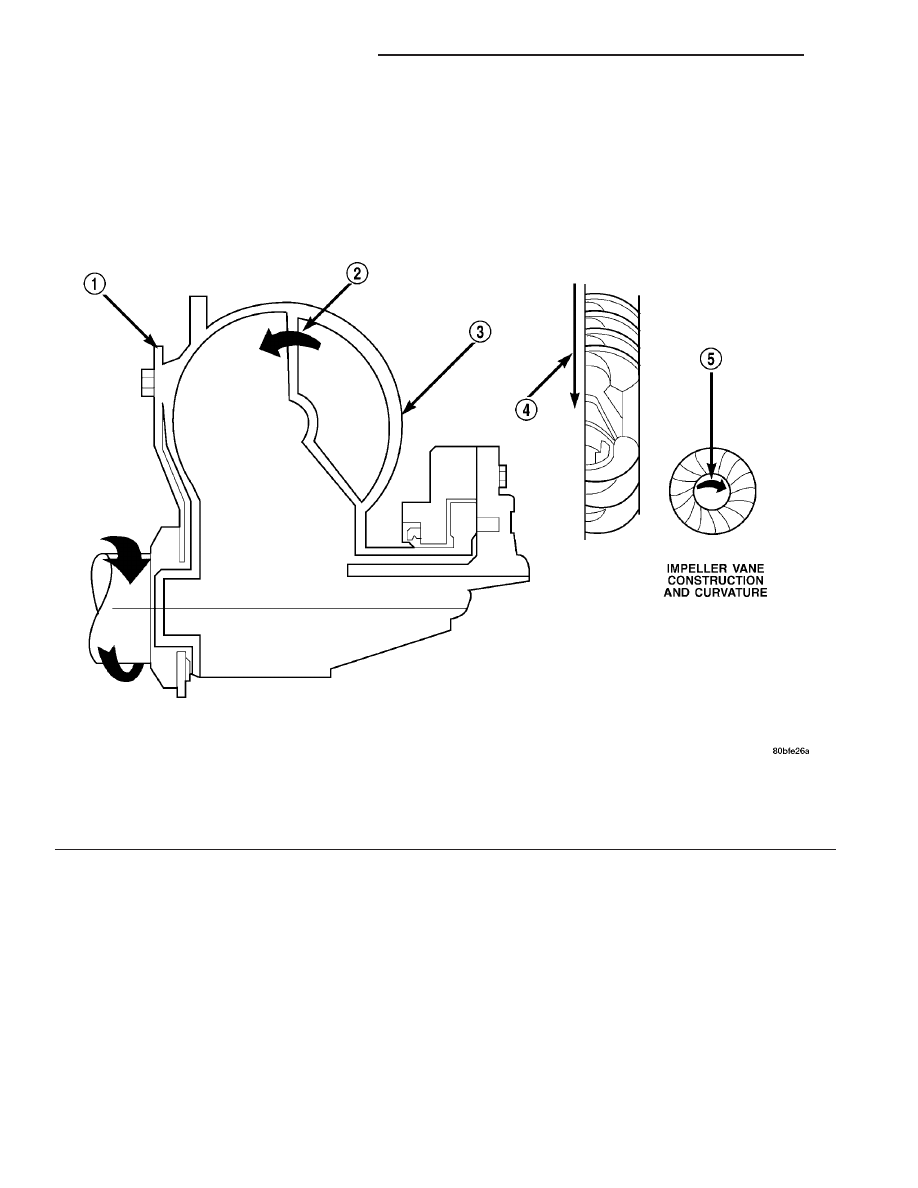Chrysler PT Cruiser. Manual - part 875

IMPELLER
The impeller (Fig. 348) is an integral part of the
converter housing. The impeller consists of curved
blades placed radially along the inside of the housing
on the transmission side of the converter. As the con-
verter housing is rotated by the engine, so is the
impeller, because they are one and the same and are
the driving member of the system.
Fig. 348 Impeller
1 - ENGINE FLEXPLATE
4 - ENGINE ROTATION
2 - OIL FLOW FROM IMPELLER SECTION INTO TURBINE
SECTION
5 - ENGINE ROTATION
3 - IMPELLER VANES AND COVER ARE INTEGRAL
21 - 454
41TE AUTOMATIC TRANSAXLE
PT
TORQUE CONVERTER (Continued)